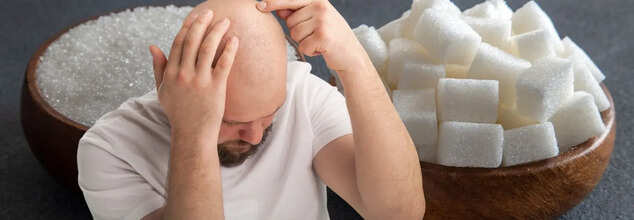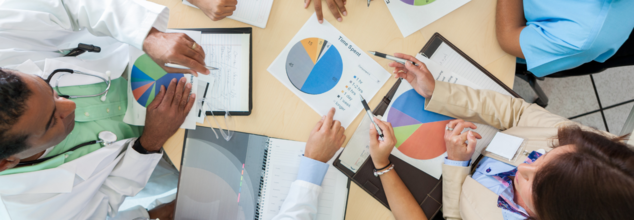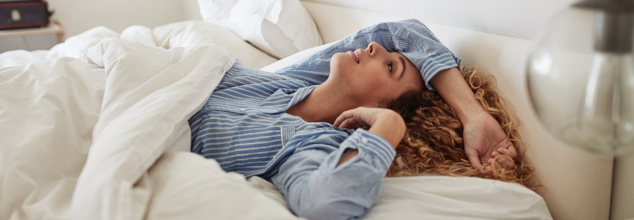- Health Conditions A-Z
- Health & Wellness
- Nutrition
- Fitness
- Health News
- Ayurveda
- Videos
- Medicine A-Z
- Parenting
- Web Stories
Sugar Is The Solution To Male Pattern Baldness: Research

Male Pattern Baldness (Credit: Canva)
While it is not possible to revive shrunken hair follicles, scientists might have found a potential solution to male pattern baldness. Recently, researchers in Pakistan discovered that naturally occurring sugars in humans and animals could be harnessed as a tropical treatment for baldness. It is pertinent to note that male pattern baldness or Male androgenetic alopecia (MAA) is the most common form of hair loss in men, affecting 30-50% of men by age 50.
The scientists were conducting research on how sugar can help heal wounds by aiding the formation of new blood vessels. During the research, the team also noticed that hair around the healing wounds appeared to grow more quickly compared to those that hadn’t been treated. Following this interesting discovery, they established a model of testosterone driven hair loss in mice. This was similar to pattern baldness that happen in men. They found that applying a small amount of naturally driven sugar helped formation of new blood vessels and eventually triggering hair regrowth. The study showed that deoxy ribose sugar is an effective elements to regrow hair.
Male pattern baldness is such a common condition, affecting men all over the world, but at the moment there are only two FDA licensed drugs to treat it. Our research suggests that the answer to treating hair loss might be as simple as using a naturally occurring deoxy ribose sugar to boost the blood supply to the hair follicles to encourage hair growth," Professor Sheila MacNeil said.
What Are Natural Ways To Promote Faster Hair Growth?
Achieving faster hair growth involves more than just using the latest products—your overall lifestyle plays a crucial role. Here’s a concise guide to key strategies for healthier, faster-growing hair.
Balanced Diet: A nutritious diet is foundational for hair health. Hair is composed of 97% protein, so incorporating ample protein sources like fish, eggs, and lean meats into your meals is essential. Include complex carbohydrates such as brown rice and whole-wheat toast to provide energy for hair cell growth. Vitamins, minerals, and omega-3 fatty acids from fruits, vegetables, and oily fish also support hair vitality.
Quality Sleep: Adequate, restful sleep is vital for your body’s repair and recovery processes, including hair health. Poor sleep can impact adrenal function and overall well-being, affecting hair growth.
Supplements and Vitamins: While a balanced diet should be your primary source of nutrients, supplements can be beneficial if your diet lacks certain vitamins. Key supplements include biotin, which supports hair protein synthesis, and vitamin B12, especially important for vegans. Consult a healthcare provider before starting any supplements.
Regular Trims: Although trims don’t speed up hair growth, they prevent split ends and maintain hair quality. Regular trims, recommended every six to eight weeks, can help keep your hair looking healthy.
Scalp Care: A healthy scalp is crucial for hair growth. Regularly shampoo and exfoliate your scalp to remove buildup and promote circulation. Use gentle, natural products to avoid irritation.
Heat Protection and Hair Care: Limit heat styling and always use a heat protector. Opt for lower temperatures and avoid overuse of styling tools. Use soft fabric hair ties to prevent breakage and brush hair gently when wet to minimize damage.
Physician Associates Or Assistant Doctors? Government Review Urges Renaming To Avoid Misunderstandings

(Credit-Canva)
A recent independent review suggests that staff who help doctors in hospitals and GP offices, who are called Physician Associates (PAs) and Anaesthesia Associates (AAs), should be renamed "assistants." The review that has been in work since the past year has finally presented its findings and results. The Leng review has been looking into the various aspects of AAs and PAs to understand where there are shortcomings and why must there be changes.
One of the biggest issues that people have with PAs and AAs is confusing them with doctors. The review also recommends that these assistants wear specific uniforms and badges to clearly tell them apart from doctors. Crucially, it states that these assistants should not be the ones to diagnose patients' illnesses.
The UK Department of Health & Social Care called for this review last year due to ongoing debates about the exact roles and duties of these healthcare professionals. When PAs and AAs were first brought into the NHS in the early 2000s, there wasn't a clear plan for how they would fit into existing medical teams. This led to a lot of confusion about what they were supposed to do. Sometimes, when there weren't enough doctors, PAs filled in, even without the extensive training doctors receive, and without proper guidance from supervisors.
The report gives a full picture of the role of Medical Associate Professionals (MAPs) in UK healthcare.
Tragic Cases Highlight Confusion
The review heard from families who lost loved ones after they were treated by PAs, mistakenly believing they were qualified doctors. For example, a young woman died from a blood clot after being seen twice by a Physician Associate who thought her calf pain was just a sprain.
Another family shared how their elderly mother died from an infection after a PA treated her in hospital. While these families do not blame the assistants, they stress the need for much clearer identification and roles. They believe that in stressful hospital situations, patients and families might not fully grasp who is treating them.
Scrutiny And Problems Faced By MAPs
However, the College of Medical Associate Professionals also present the value of MAPs and how the public views them needs to get better. News and social media have sometimes created misunderstandings about what MAPs do and how they fit into healthcare teams. Patients sometimes get confused, thinking a PA is a doctor, even when efforts are made to explain the role. There's a need for clear public education campaigns to help people understand and accept MAPs in the NHS.
The report also highlights that MAPs are facing significant stress and negative feelings because of the current environment, which many call an "anti-MAP campaign." This negativity affects their mental health both at work and at home. They point to media stories, social media attacks, and strict new rules as major causes of distress.
Worryingly, bullying and harassment at work are common. Over a third of qualified MAPs reported being bullied, and many experienced online harassments. A large number of student MAPs also faced bullying during their training. These experiences have led many MAPs to consider leaving their jobs or actually leaving. Women MAPs and those from minority ethnic backgrounds were more affected, making up a larger share of those who left their jobs despite being a smaller group overall in the workforce.
The British Medical Association responds to the review highlighted that the report reveals how NHS England allowed these new roles to grow without properly checking if they were safe. They point to a lack of strong national leadership, no clear accountability, and a failure to listen to concerns raised by doctors, patients, and even coroners (who investigate deaths).
The BMA argues that allowing the roles of doctors and non-doctors to become unclear, even with the help of the General Medical Council (GMC), has been a serious problem. Many doctors, they say, will feel that their earlier warnings were justified.
Key Steps Taken to Improve Medical Assistant Roles
While the proposed name change is a positive step, many in the medical community believe more needs to be done to clearly define what these assistants can and cannot do to ensure safe teamwork in the NHS.
This report makes several important recommendations for Medical Associate Professionals (MAPs), like Physician Associates (PAs) and Anaesthesia Associates (AAs), to make their roles clearer and more effective.
Clearer Rules and More Power
The report strongly suggests creating official rules and standards for MAPs. This will help make sure they are held accountable and that the public trusts them more. Since new rules are already being put in place, this should bring more trust and stability to their roles.
It also recommends giving MAPs the ability to prescribe medicine and order certain X-rays. This change would allow them to do their jobs more efficiently and use their skills better. There should also be national standards for their training after they qualify and for how they can move up in their careers. This will ensure that MAPs across the country receive consistent training and development.
Better Teamwork and Support
The report advises putting more money into planning the healthcare workforce. This will allow for the smart growth of MAP roles, making sure there are enough of them to meet the needs of the NHS. MAPs can actually help improve the training of junior doctors, rather than hindering it.
Better teamwork and strong leadership will help MAPs fit in well, creating a unified healthcare team that benefits both medical staff and patients. The report also suggests doing regular checks using anonymous feedback from patients to keep track of how MAPs are performing and their overall impact.
Supporting MAPs' Well-being
Finally, the report highlights that the well-being of MAPs is a widespread issue within the healthcare system, not just about individual toughness. The rules set by medical groups must be made with the input of MAP leaders and checked carefully to ensure they don't unfairly exclude anyone. Feeling respected and safe at work is extremely important for keeping staff, ensuring patients are safe, and providing good care.
NHS Warns People To Look Out For These Symptoms - If It Persists For More Than Two Days, Visit Your Doctor

(Credit-Canva)
As summers progress in the UK, people are planning out vacations, and a restful summer evening as the long days give plenty of room to do things you wish to even after you finish your work. However, these plans can very well come to an end if you do not take the correct precautions.
The NHS has sent out an important alert because cases of norovirus, also known as the "winter vomiting bug," are higher than usual. Although norovirus, seasonally, is a bigger issue in winter, the rising number of cases prompted the NHS to warn people. In a social media post on platform X, they explained that this highly contagious illness is causing widespread concern, and the NHS is urging people to be aware of its symptoms. They've noted that while norovirus can spread all year round, current numbers are particularly elevated.
Norovirus: Symptoms and Self-Care
Norovirus typically causes diarrhea and vomiting. While these symptoms are very uncomfortable, they usually get better within a couple of days. The NHS advises that for most people, treating themselves at home is the best approach, emphasizing the importance of drinking plenty of fluids to avoid dehydration. Common symptoms of norovirus include:
- Sudden nausea (feeling sick)
- Vomiting
- Diarrhea
- Sometimes a fever, headaches, stomach cramps, and aching limbs
Recent Case Numbers
Recent data from the UK shows a significant increase in reported norovirus cases. Between May 26 and June 29 this year, there were over 16,600 cases, which is much higher than the average for the same period over the past five years.
However, the UK Health Security Agency (UKHSA) has also reported that norovirus cases are now starting to decline and are returning to expected levels after a seasonal peak. Even with this decline, the number of reports in recent weeks was still higher than the five-year average for that same time frame, mainly due to a high number of cases reported earlier in the period.
How Norovirus Spreads
Due to the contagious nature of the virus, one must remember to take correct precautions not to spread them. Even a small, seemingly insignificant move could cause you to become a carrier.
- Don't wash your hands properly after using the toilet.
- Are in close contact with someone who has the virus.
- Touch surfaces or objects that have the virus and then touch your mouth.
- Eat food prepared by someone with norovirus.
- Consume contaminated water or food.
Preventing the Spread
To help stop norovirus from spreading, the NHS recommends some important steps. Always wash your hands thoroughly with soap and water after using the toilet, changing diapers, or before preparing or eating food. It's also important to remember that alcohol-based hand gels don't kill norovirus, so soap and water are essential.
If your clothes or bedding get soiled with vomit or feces, wash them at 60°C (140°F) and separately from other laundry. One must remember to regularly clean shared surfaces like toilet seats, flush handles, taps, and bathroom door handles. You must also try to avoid contact with others as much as possible if you feel unwell.
When to Stay Home and When to Seek Help
If you or your child start showing symptoms of norovirus, it's really important to stay home. Do not go to school, nursery, or work until you haven't thrown up or had diarrhea for two full days (48 hours). This helps prevent the virus from spreading further. Similarly, avoid visiting people in hospitals or care homes during this time. If you or your child have diarrhea that lasts for more than seven days, or if vomiting continues for more than two days, seek medical help.
Shubhanshu Shukla Returns From ISS, What All Medical Examinations Are Lined Up

Shubhanshu Shukla, the Indian Air Force Group Captain is back on Earth after spending 18 days aboard the International Space Station (ISS). What now awaits is a long list of medical examination to ensure that Shukla and the other astronauts from Poland and Hungary are in good health.
What Are The Post-flight Medical Examinations For Astronauts?
The journey back from space marks the start of a whole new phase for astronauts. Just after splashdown, Group Captain Shukla and his fellow crewmates were helped out of the capsule by SpaceX recovery teams. Once aboard the recovery vessel, they underwent initial medical checks to assess their vital signs and general health.
These immediate tests are part of a broader post-flight health monitoring protocol aimed at studying how spaceflight affects the human body. Since astronauts’ health parameters are recorded before launch, comparing them with post-landing data helps scientists understand the impact of microgravity on various body systems.
Also Read: After Jannik Sinner, Tara Moore Makes News Failing Her Doping Test, Resulting In A 4-Year Long Ban
As the pilot of the Axiom-4 mission, Shukla will undergo an extensive series of assessments — from cardiovascular and immune system checks to balance, coordination, and psychological evaluations.
Over the coming weeks, both NASA and the Indian Air Force will monitor his physical and mental recovery closely.
Readjusting to Earth’s gravity is not instant. In space, the lack of gravity leads to muscle weakening, bone density loss, and a fluid shift in the body that can affect circulation and organ function. To counter this, astronauts follow a personalized reconditioning plan designed to help their bodies re-adapt. These programmes focus not only on regaining strength but also on retraining the body’s proprioception — the sensory system that allows us to sense our position and movement, which becomes disoriented in space.
Life in Microgravity: What It Feels Like
Speaking from the International Space Station during the mission, Shukla had shared the strange feeling of disorientation he experienced during his initial days in orbit. “It’s the first time for me, so I don’t know what to expect [upon return],” he said. “The only hope is — I did have some symptoms coming up — so I am hoping that I will not have it going down. Unless and until I get the worst of both worlds and I get it both the times.”
Also Read: Veteran Actor Dheeraj Kumar Dies At 79 Due To Acute Pneumonia
Many astronauts deal with “space motion sickness” during the early days of their mission. This occurs when the brain receives mixed signals from the inner ear, which is crucial for balance on Earth. Upon return, the challenge reverses — as the body tries to function under the force of gravity again, simple actions like standing or walking can temporarily become difficult.
According to official reports, Shukla and his team will soon be transported to NASA’s Johnson Space Center in Houston for further recovery and evaluation, either by sea or air.
Post-Flight Rehabilitation
As per Polash Sannigarhi, Chief Instructor, Aeromedical, Training Center, Air Force Station Hindan, Ghaziabad, there are many rounds of medical checks that an astronaut undergoes. Being a flight surgeon himself, he writes in the paper, "Post-flight rehabilitation of an astronaut after long duration mission in space: Through the eyes of a flight surgeon" published in 2023.
Post-flight Medical Evaluation
Medical assessments begin within a day of landing (R+1) and cover a wide range of investigations:
Laboratory Tests: Conducted per NASA’s MEDB guidelines to assess biochemical and physiological parameters.
Physical Examination: Daily systemic check-ups by a flight surgeon to monitor overall health.
Anthropometry: Measurement of height and body mass to assess fluid shift and skeletal changes.
Psychological Assessments: Conducted privately by a mission psychologist on R+1 and R+10.
Sensorimotor and Vestibular Tests: Includes dynamic posturography and mobility assessments to evaluate balance and spatial orientation.
Ophthalmologic and Audiological Tests: Exams such as visual acuity, contrast sensitivity, orbital MRI, and audiometry.
Cardiorespiratory Assessment: ECG post-landing and spiro-ergometry on R+5 to assess VO₂ max.
Nutritional, Radiation, and Sleep Assessments: Involves dietary surveys, urine and blood sampling, dosimeter analysis, and sleep quality tracking.
Radiological Imaging: Targeted MRIs and ultrasounds are performed based on clinical indications.
Post-flight Physical Rehabilitation
This begins as early as the first day post-landing and is tailored to individual needs. A multidisciplinary team — including a Flight Surgeon, Physiotherapist, and Exercise Specialist — oversees it.
Initial Days (R0–R+1): Massage therapy for muscle relaxation.
R+2 to R+7: Structured exercise routines, including warm-ups, back and leg activation exercises, gait training, balance drills, and posture work using equipment like resistance bands.
Hydrotherapy (Following Week): Aquatic activities like aqua jogging and ball games mimic microgravity and help recondition muscles in a low-impact environment.
Core anti-gravity muscles such as the multifidus and transversus abdominis are monitored using ultrasound to track structural recovery. Flexibility and proprioception exercises are gradually reintroduced. Astronauts avoid jumping or high-impact activities until deemed fit by the team.
Each day concludes with team reviews to adapt the next day’s plan based on physical response. The program’s primary goal is to return astronauts to their pre-flight physical condition safely, without overexertion or injury.
© 2024 Bennett, Coleman & Company Limited

